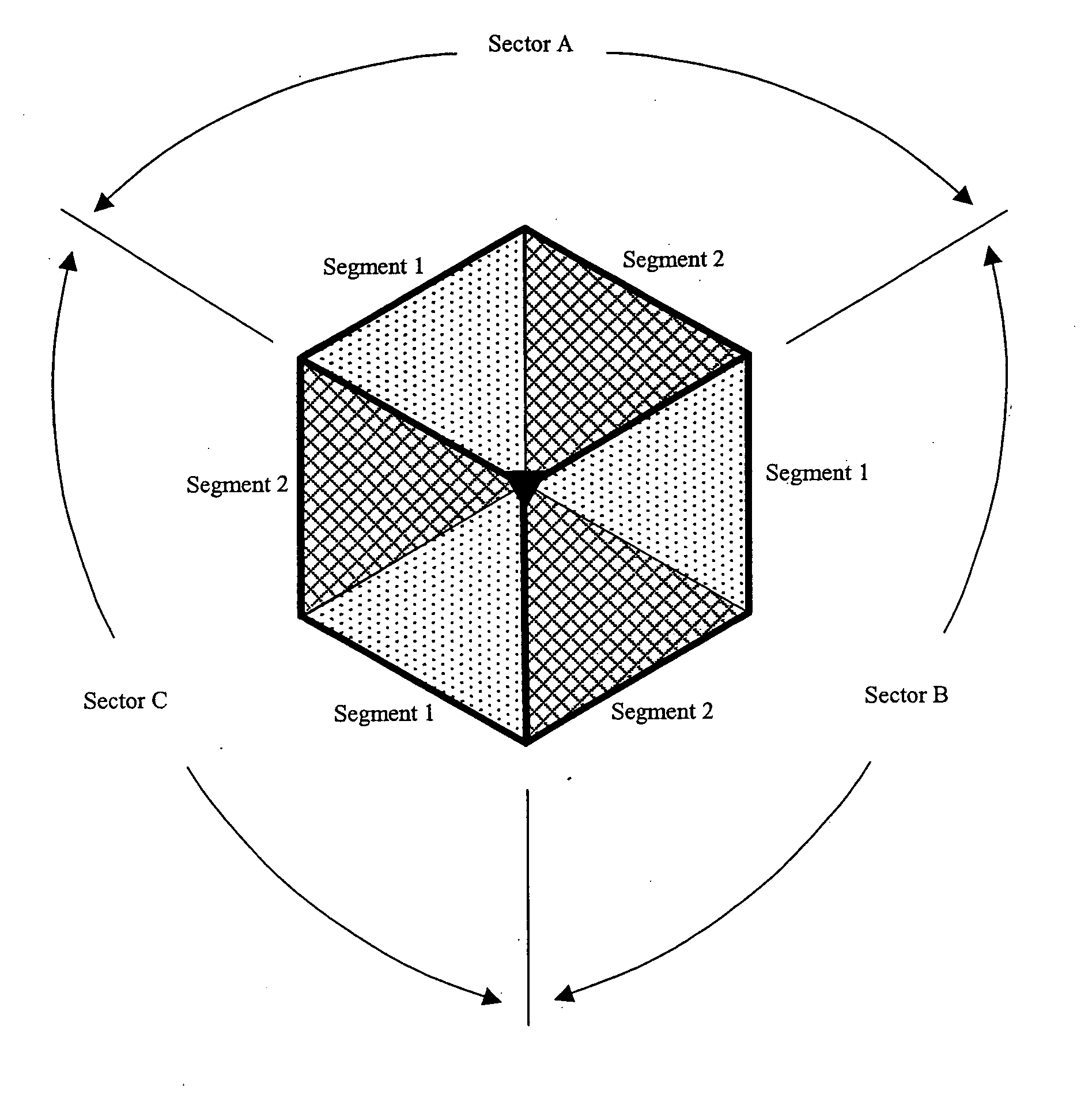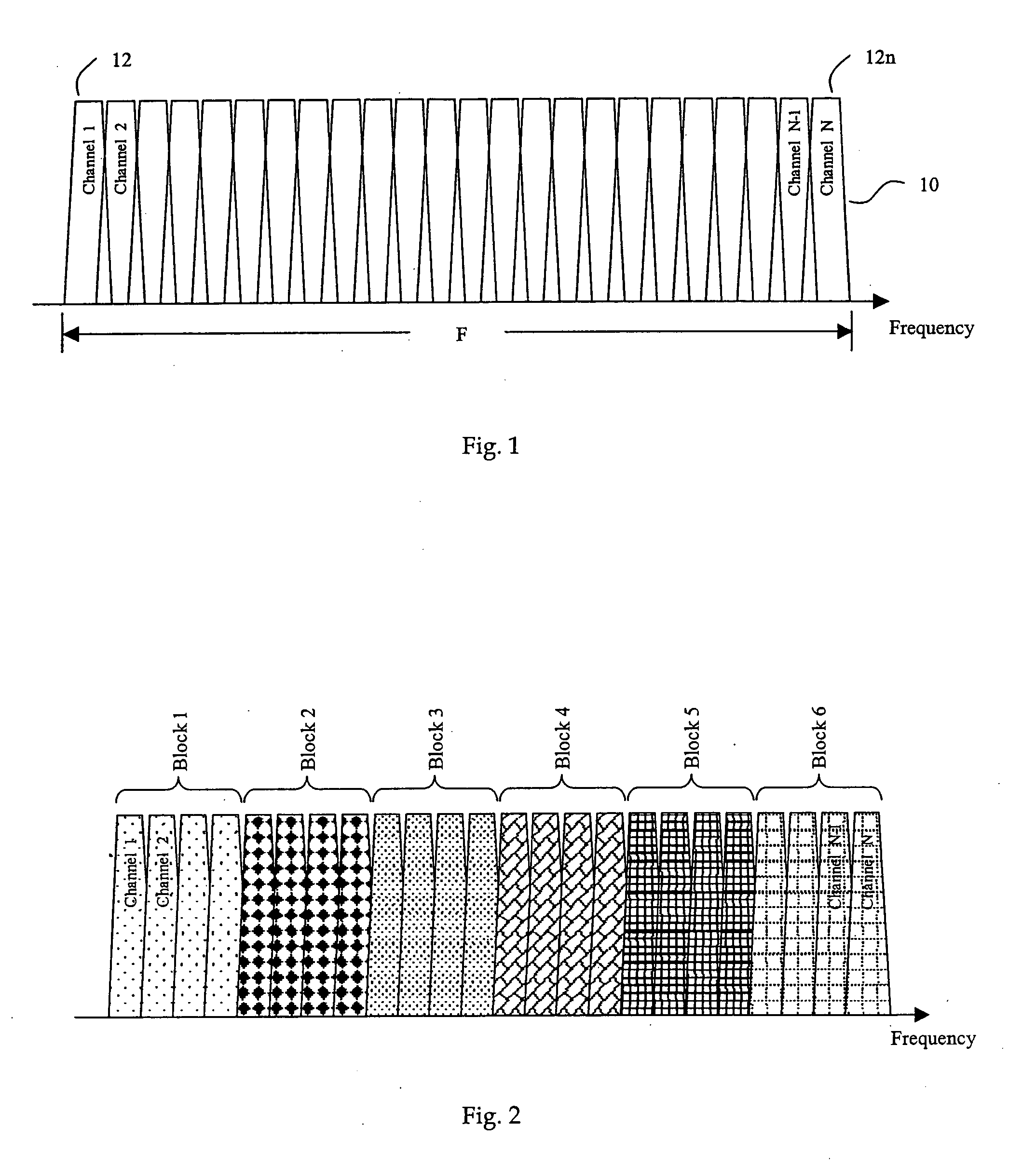Method and system for reducing wireless multi-cell interferences through segregated channel assignments and segregated antenna beams
a wireless multi-cell interference and channel assignment technology, applied in the field of wireless multi-cell interference reduction, can solve the problems of limiting the capacity and coverage multi-cell interference in wireless systems, and impairing the performance of wireless communication systems, so as to reduce multi-frequency signal interference, reduce multi-cell interference, and reduce the effect of mutual interferen
- Summary
- Abstract
- Description
- Claims
- Application Information
AI Technical Summary
Benefits of technology
Problems solved by technology
Method used
Image
Examples
Embodiment Construction
[0025] Although the present invention is illustrated below with regard to a few limited examples, it is understood that the present invention is applicable to any multiple access technologies which implement frequency division for multiple access channelization. Such access technologies include Frequency Division Multiple Access (FDMA), Time Division Multiple Access (“TDMA”), Multi-Carrier Code Division Multiple Access (“MC-CDMA”), and Orthogonal Frequency Division Multiplex Multiple Access (“OFDM-MA”) and any combination thereof, whether synchronized or unsynchronized, using Frequency Division Duplex (“FDD”) or Time Division Duplex (“TDD”). The description below with regard to examples of the present invention may be cast in the context of MC-SCDMA systems where the channels with more isolation are the channels in different subcarriers and the channels with less isolation are defined as code channels in the same subcarrier. Obviously, the same concept can be extended to TD-SCDMA sy...
PUM
 Login to View More
Login to View More Abstract
Description
Claims
Application Information
 Login to View More
Login to View More - R&D
- Intellectual Property
- Life Sciences
- Materials
- Tech Scout
- Unparalleled Data Quality
- Higher Quality Content
- 60% Fewer Hallucinations
Browse by: Latest US Patents, China's latest patents, Technical Efficacy Thesaurus, Application Domain, Technology Topic, Popular Technical Reports.
© 2025 PatSnap. All rights reserved.Legal|Privacy policy|Modern Slavery Act Transparency Statement|Sitemap|About US| Contact US: help@patsnap.com



